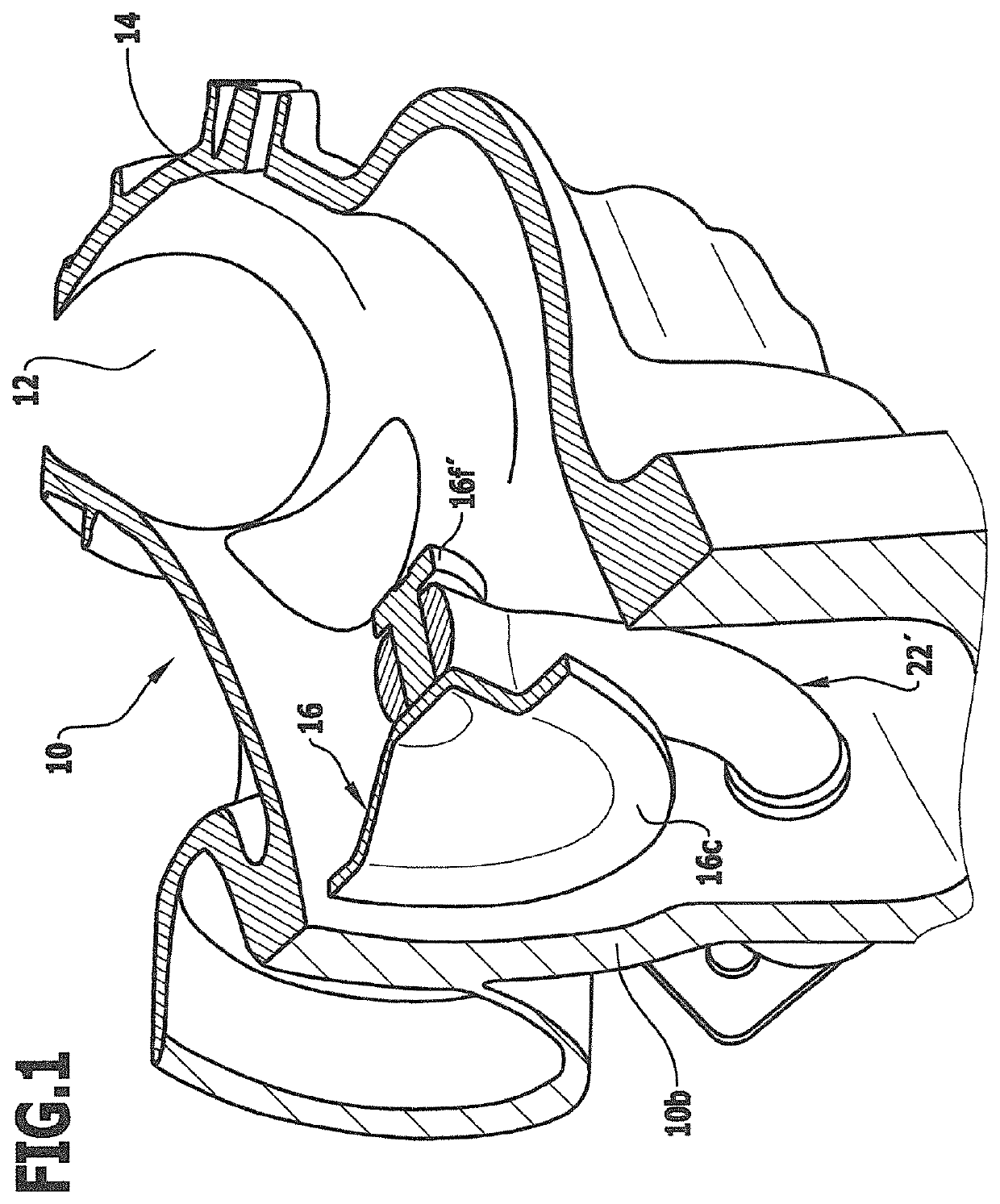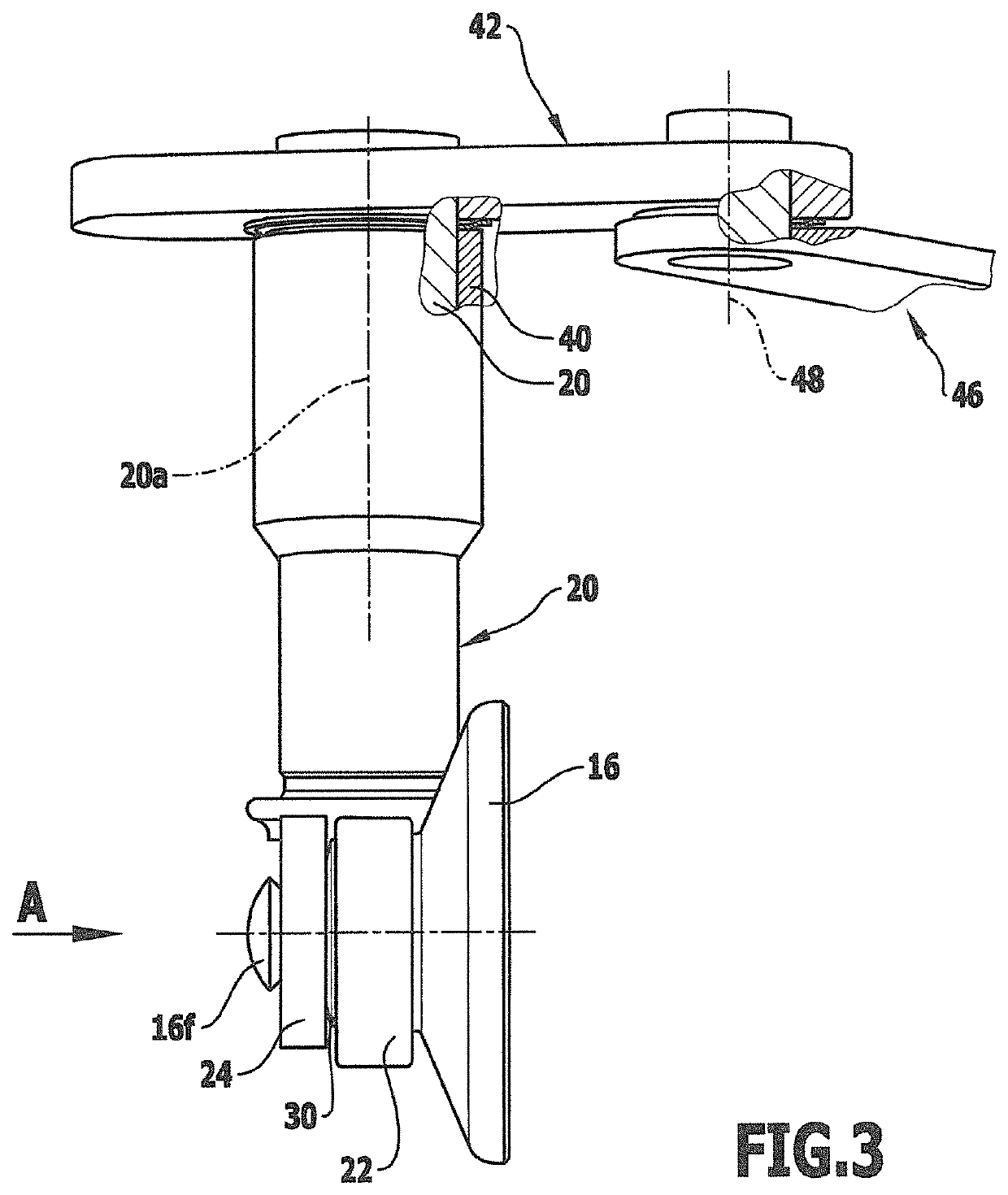Valve device for a turbocharger
a valve device and turbocharger technology, which is applied in the direction of springs/dampers, combustion engines, belleville-type springs, etc., can solve the problems of clattering and rattling noises, and the installation space of the spring element in the wastegate valve region of the turbocharger is usually strictly limited
- Summary
- Abstract
- Description
- Claims
- Application Information
AI Technical Summary
Benefits of technology
Problems solved by technology
Method used
Image
Examples
Embodiment Construction
[0034]FIGS. 1 to 6 and 6A are largely identical to FIGS. 1 to 6 and 6A of DE 10 2012 101 322 A1, and consequently features of the present invention are not evident therein. The accompanying FIGS. 1 to 6 and 6A and the following description thereof, however, serve to facilitate the understanding of the present invention.
[0035]FIG. 1 shows a part of a turbine housing 10 into which the exhaust gas flow serving to drive an exhaust gas turbocharger turbine, not shown, enters through an exhaust gas inlet opening 12. Said exhaust gas inlet opening connects with an exhaust gas inflow path 14 formed in the turbine housing 10, which exhaust gas inflow path leads to the turbine, and a valve element 16, in this embodiment configured as a wastegate valve, is arranged in the exhaust gas inflow path. This valve element 16 of plate-like configuration, shown only partly in FIG. 1, can be moved in a manner described below in the exhaust gas inflow path 14 relative to the turbine housing 10, to enable...
PUM
 Login to View More
Login to View More Abstract
Description
Claims
Application Information
 Login to View More
Login to View More - R&D
- Intellectual Property
- Life Sciences
- Materials
- Tech Scout
- Unparalleled Data Quality
- Higher Quality Content
- 60% Fewer Hallucinations
Browse by: Latest US Patents, China's latest patents, Technical Efficacy Thesaurus, Application Domain, Technology Topic, Popular Technical Reports.
© 2025 PatSnap. All rights reserved.Legal|Privacy policy|Modern Slavery Act Transparency Statement|Sitemap|About US| Contact US: help@patsnap.com



